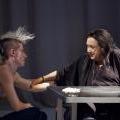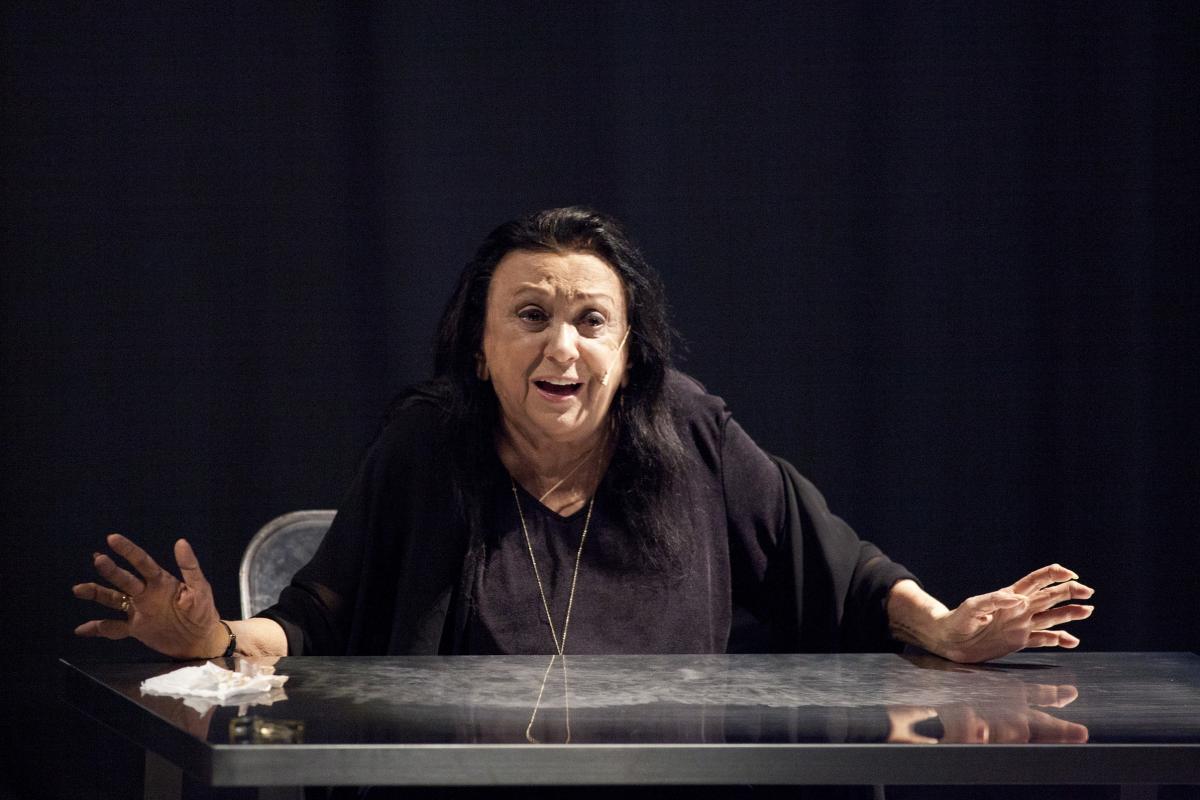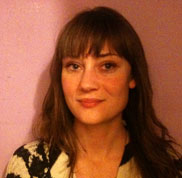The Plot is the Revolution
This is going to start out largely as a confession. A couple of months ago I had been promised an interview with Judith Malina, one of the most influential living practitioners of theatre, an actress, director and political militant, and the founder of The Living Theater in New York. I knew Malina had a show coming up at the Théâtre de la Ville in June, one at least partly in English, and buoyed by the idea of writing from a direct Q&A with this doyen of theatre I managed to get myself not only a press place for the show but, well, even a theatre blog. However, after sending my questions over to Malina’s Exec Producer, their responses reduced to a dribble, then to a drip and finally… the rest was silence. I understand, I know they have a lot on their theatrical plate at the moment. But feeling a touch stranded, and a little guilty about my confidently-claimed press place, I have decided to nevertheless march brazenly ahead and base this blog entry on some of my questions for Judith anyway, as they were rather good I thought, and in any case, I don’t like waste.
Firstly, about the show. The Plot is the Revolution appears as part of the Théâtre de la Ville’s Chantiers d’Europe season on Saturday the 9th June, and is performed in English and Italian. It features Judith Malina, a hugely important force in modern theatre, and particularly in a theatre often used for political ends, and the Italian Silvia Calderoni, winner of the Prix Ubu for best actress under the age of 30. The performance is based around the character of Antigone. What at first fascinated me about this show is the seeming contrast between these two great women. Not to beat around the bush, Judith Malina is pretty old. Born in 1926, she is helped on to the stage and spends the entire show sitting behind a table, peering over her glasses and calling out instructions to Silvia. But although the flesh may be weak, Judith has lost none of her power, her command, or the inordinate strength that she has exhibited throughout her life. In contrast, Calderoni is as lean as a whippet, with a streak of bleached Mohawk hair, and she immerses herself completely in her performance on stage, with an absolute energy and vigour, as Judith speaks to her. Through theatre these two women manage to bridge the chasms – of generations, culture and language – that separate them.

KF: Whose idea was it to put you and Silvia Calderoni together ? How did you find working with someone from a relatively young theatre company?
KF: The show was conceived and written by Enrico Casagrande and Daniela Nioló, of the Italian theatre group Motus. Presumably they contacted Judith, as they had already been working with Calderoni since 2006. My own thought about this juxtaposition is that the two women both have such talent and energy that on stage together this is self-replicating, they support and feed off one other. Malina strikes me as a kind of ancient Pythia, pouring forth wisdom which is interpreted, physically, through the body of Calderoni. This show is in many ways an informative lesson as Judith teaches Calderoni on stage, and we the audience learn along with her the fundaments of the Living Theater.
KF: Do you see some of your own imprisonment and struggles with the law in Antigone’s imprisonment and struggles with Creon?
KF: Judith Malina was imprisoned by the Medicí government of Brazil in 1971 on political charges, and some of her troupe were even subjected to torture. (She says, “I’ve done things I’m ashamed of – but I’ve only ever been busted for things I’m proud of.”) The Living Theater is a political theatre, and has always challenged authority and tradition. From disrobing on stage in 1968, for which they earned multiple arrests for indecent exposure, to the creation in 2001 of a site-specfic play in the Lebanon about the abuse of political detainees in a local prison, Malina and the Living Theater have bravely confronted taboos as well as injustice. As Malina herself says, “you should refute the laws and do the thing which is most important to you. Just as for Antigone it’s the act of burying her brother… The revolt of Antigone is this determination.”
KF: Do you prefer acting or directing? Do you enjoy being directed by someone else?

KF: I am sure Judith would have given a diplomatic answer here, which would simultaneously give credit to the show’s directors, while at the
same time reminding us of her own wealth of experience direcing plays throughout the past decades. She might have pointed out that, although technically she is directed as an actress in this show, the role she plays is that of herself, directing Calderoni. Sitting behind her table she asks how Calderoni, in the role of Antigone, would cry, how she would roar, and what feelings are motivating her.

This show, with its contrasts between two extremely talented women, promises to be revolutionary. Malina is careful to insist that, for this moment, in this theatre, the audience are not spectators but participants: and from time to time are invited, if they want to, to become a part of the show. Although a production by the theatre company Motus, Malina and Calderoni afford the show all the intensity and weight we have come to expect from a Living Theater show. But despite all the experience behind her, and with the future of the Living Theater uncertain, it is perhaps unsurprising what remains important for Judith Malina. “The word that makes my heart beat fastest? ‘Now’. Because what I’m doing now is the only reality we have.” A lesson for us all, and so what can you do with your ‘now’? I suggest booking a ticket before it’s too late.



0 Comments
Post new comment